Hi, welcome back! Some Spaniards that I know have told me that my Spanish, while perfectly serviceable, comprises a strange conglomeration of sounds. This makes sense, as I first learned a watered-down version of Mexican Spanish in middle and high school in California and then studied in Madrid for a year. But there’s another component of my accent that’s distinct, still—algo ni mexicano ni madrileño—which I attribute to my first Spanish immersive experience in Cádiz, a beach town in Andalucía. Cádiz (sometimes I pronounce it Cai, as do the locals) holds a special place in my heart as I spent around six weeks of Summer 2018 there before I went to Madrid to begin the school year. A month and a half doesn’t seem like so much time to get to know a place, especially one that’s been continuously inhabited for 4,000 years, but Cádiz became my happy place and I’m so glad that I was able to share a little bit of its magic with Emma.
We disembarked our train from Sevilla and found ourselves with a couple of hours to kill before we were able to check into our housing accommodations. We stopped by the student residency where I lived a few summers ago—I think that my room was one of the top two in the middle photo—and I was finally able to buy for myself a sweatshirt from the Universidad de Cádiz, which is where my intensive Spanish language classes were held during Summer 2018.


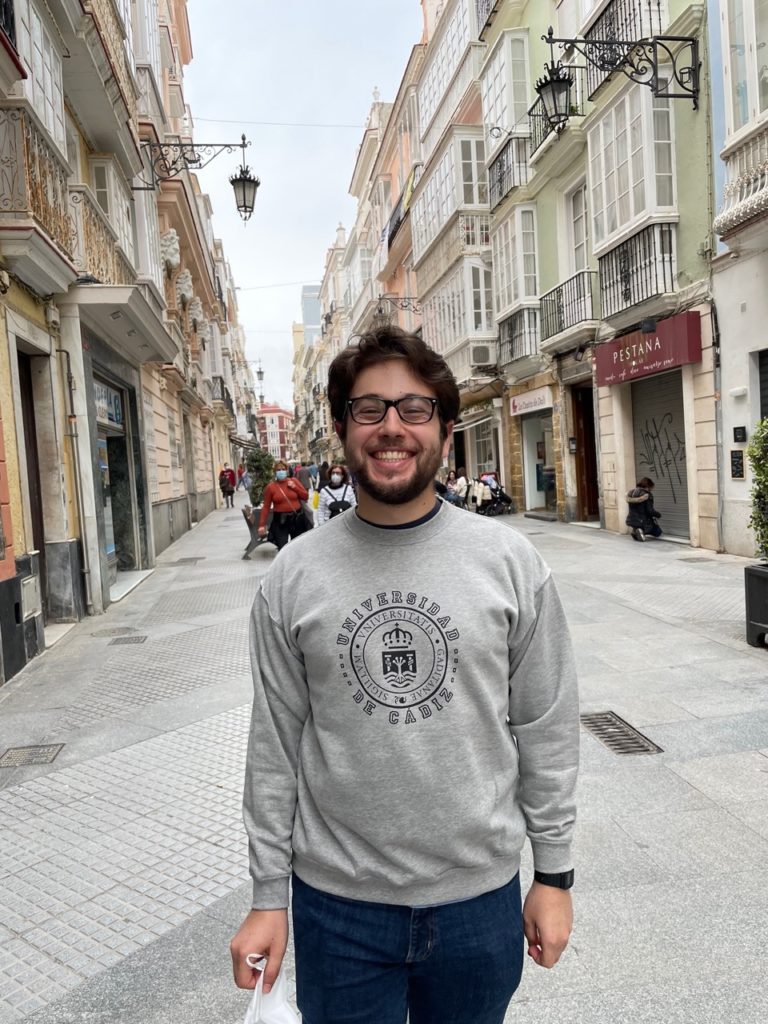
We were also able to pass by a few of the more notable monuments of the old city before check-in, such as the Plaza de Ayuntamiento and the Catedral de Cádiz. It’s common for Spanish cities and towns to have a plaza around their city hall buildings, or ayuntamientos. From my experience, the city hall is one of the most direct connections that the average Spaniard has to politics because unlike city halls in the United States, they seem to hold more significance here. Maybe that’s because the ayuntamiento is responsible for managing more social services than is the average American city hall or just because they have large gathering spaces in front of them. Either way, these plazas around the country have turned into important points for meeting, eating, and, of course, engaging in political discourse.
And as you can see, Emma did a fantastic job of capturing one of the cathedral’s bell towers as it was illuminated by sunlight! The city’s cathedral was built between 1722 and 1838 and is most notable due to its façade, which incorporates baroque, rococo, and neoclassical architectural elements. Additionally, the stone used in its construction is limestone that is local to the area, just like many other buildings in the old city of Cádiz.
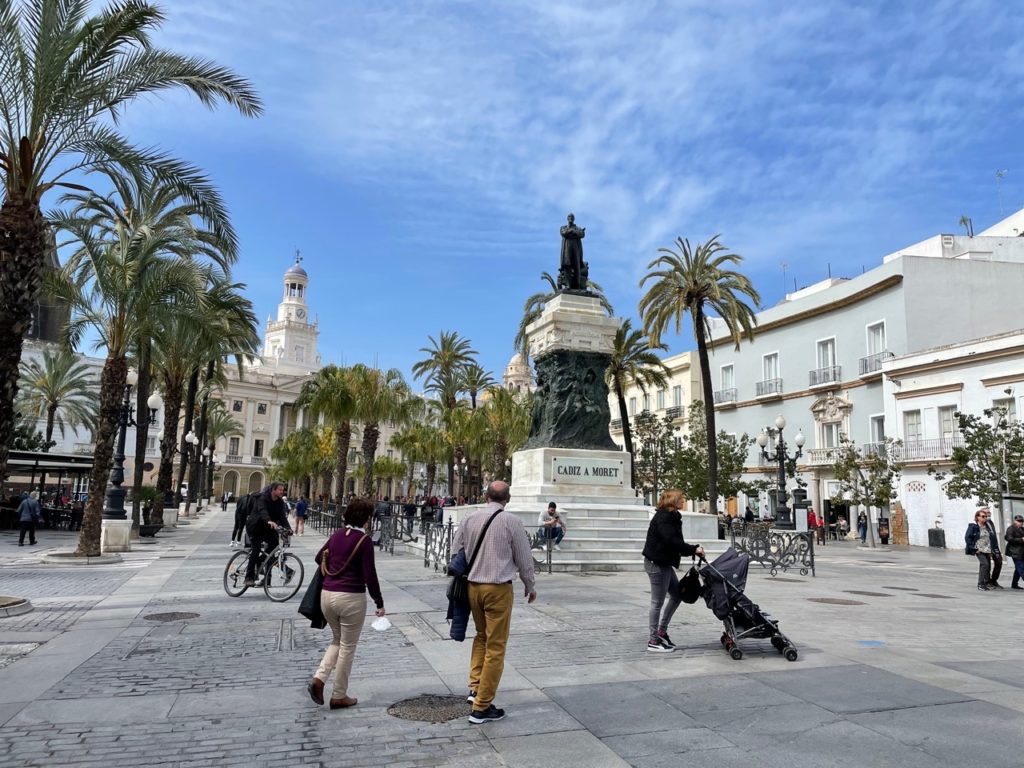
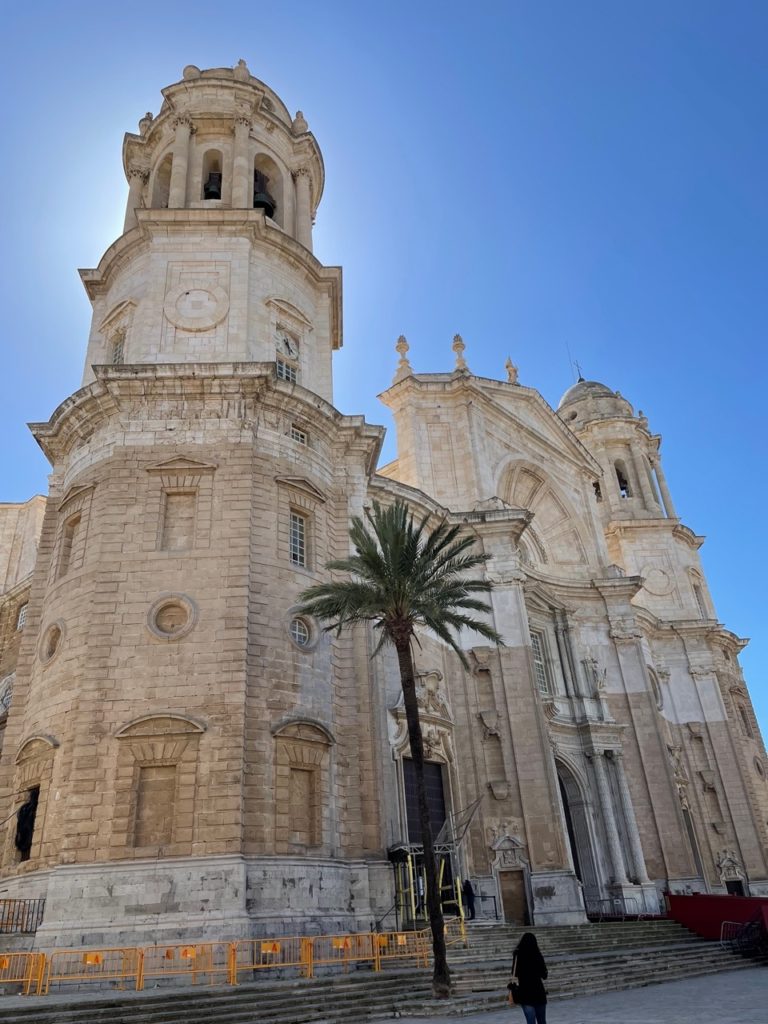
Our first dinner in Cádiz was, as you might guess, Argentinian food! We sat in what appeared to be an old wine cellar and ate vegetables (left), potatoes filled with meat (right), and a little bit of steak (not pictured because we ate it too quickly). I didn’t know that Argentinian cuisine was such a big deal in Spain until after this dinner when I was shown several targeted ads on my phone for “the best Argentinian food in Madrid,” whatever that means.
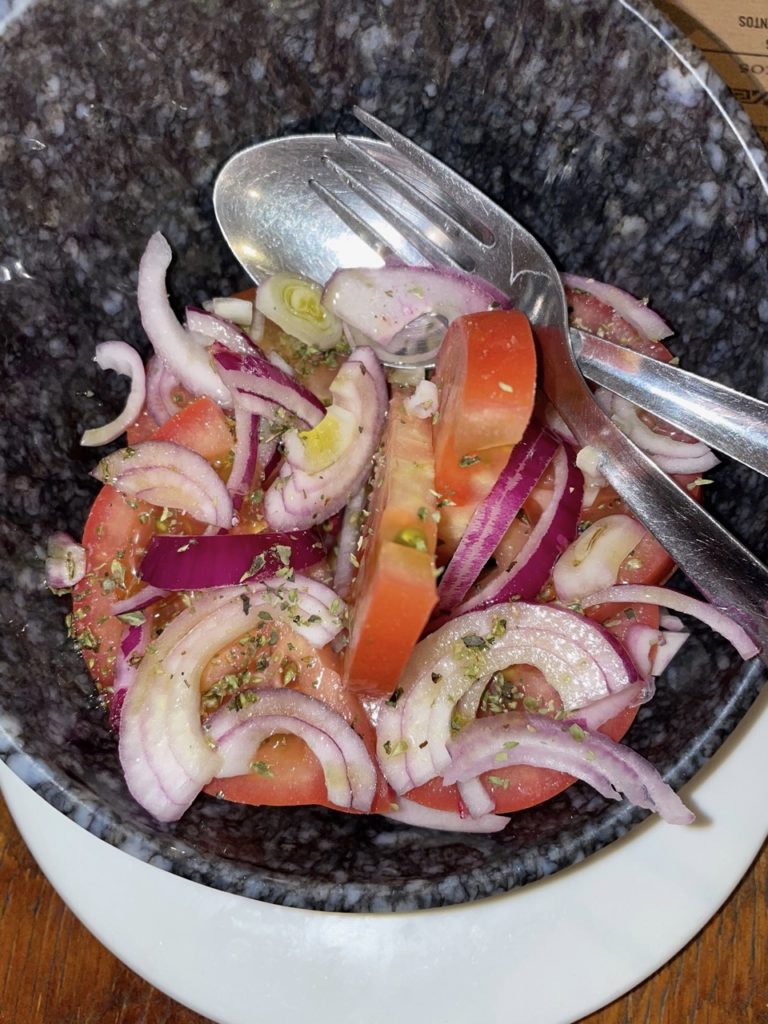
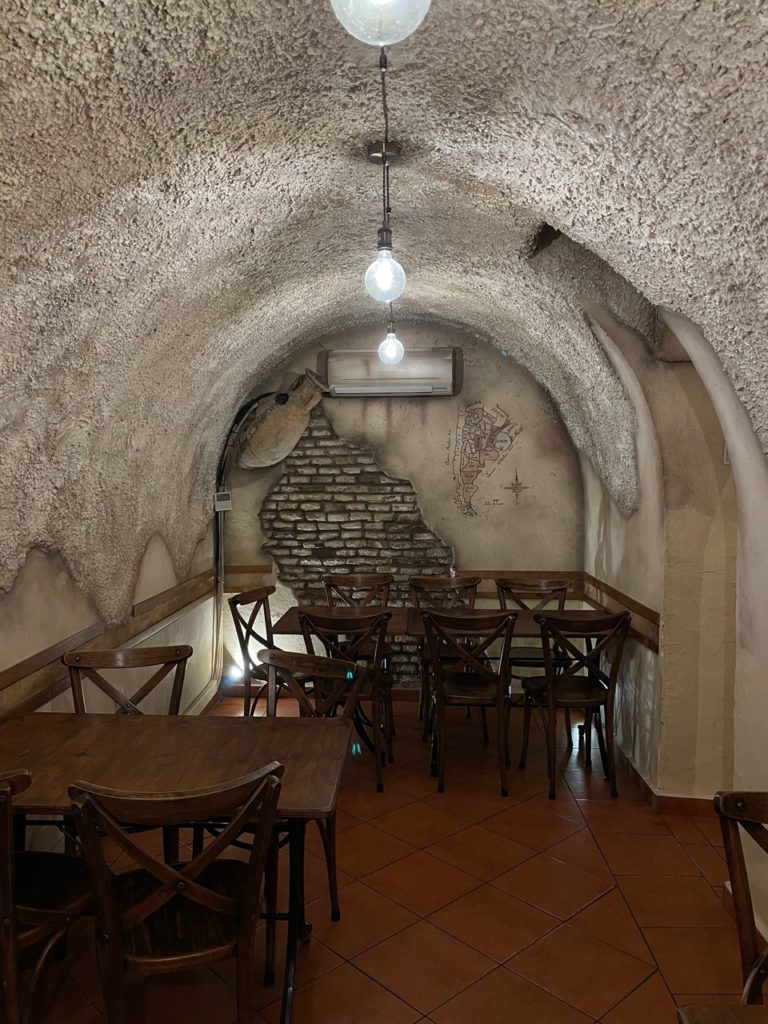
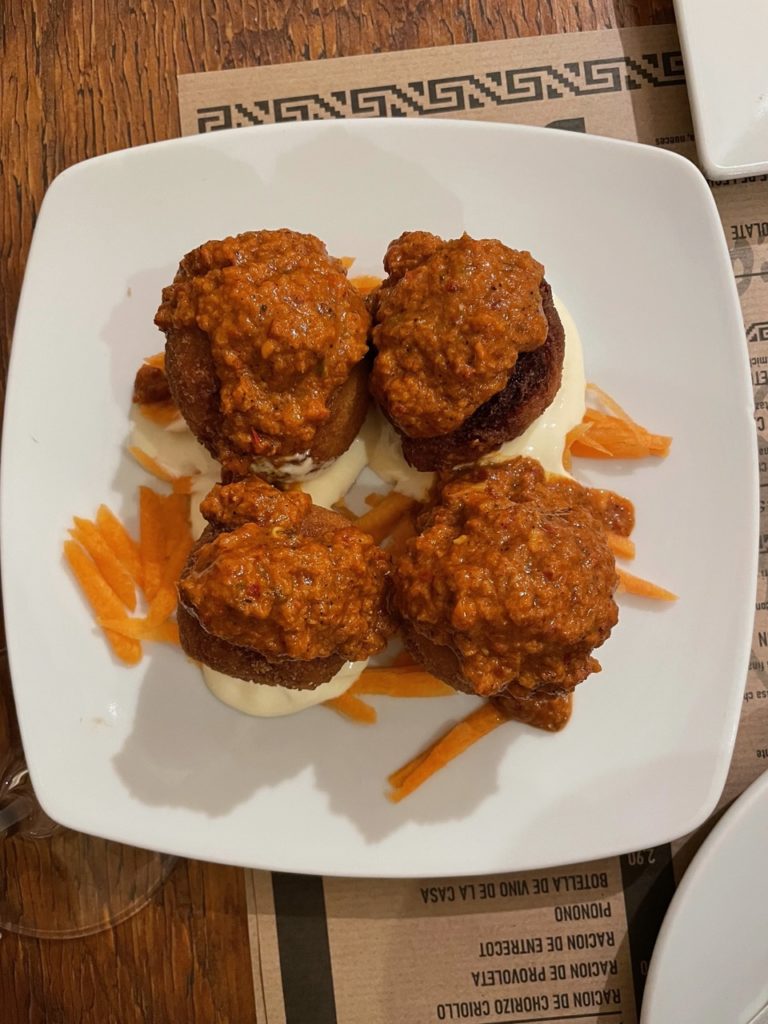
The next day, we went to see what Cádiz is really known for: its ocean views and golden hours along its fortified seaside paths. Behind both myself and Emma, you might be able to make out Rota, another city in Andalucía most known for its American naval base and brief but critical role in the plot of season four of NCIS, in which special agent Tony DiNozzo is offered a prized supervisory position at said naval base that he ultimately rejects. Needless to say, Tony missed out on the beauty of southern Spain.
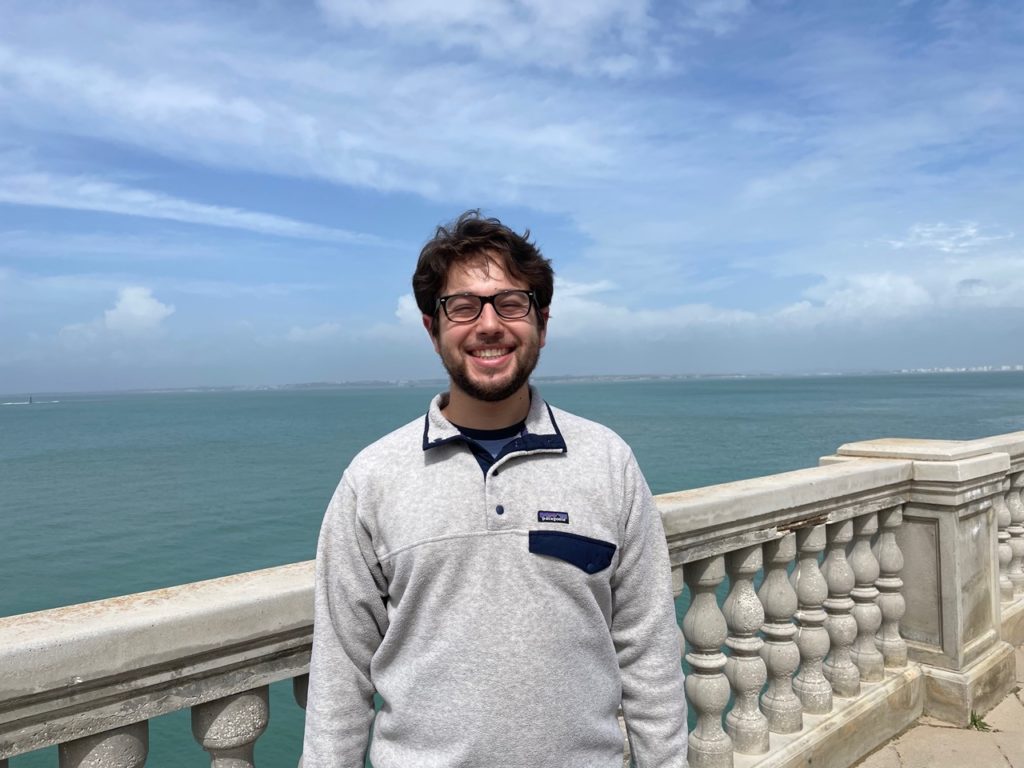

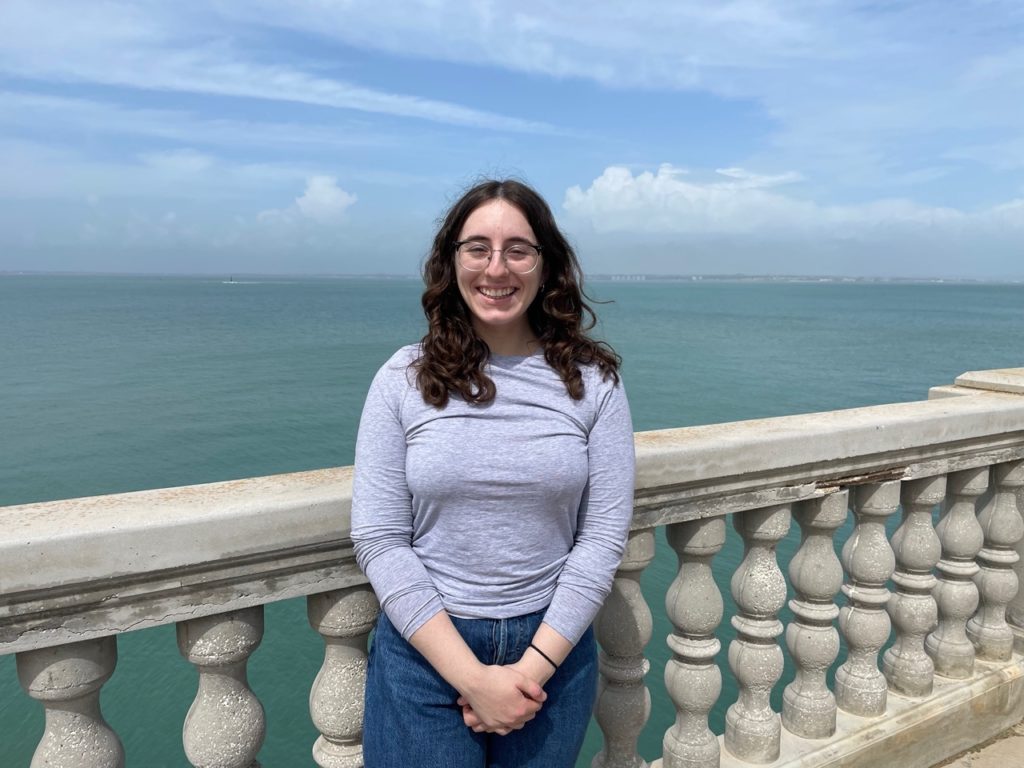
In addition to the views, Cádiz also offers a grand gastronomical scene to adventurous eaters in the form of various fried fishes (and the occasional vegetable). On the left, you’ll see fried sole (and one tomato) and on the right, you’ll find boquerones, or whole, fried anchovies. The sole was very yummy and I especially enjoyed how the bones were so easily identifiable and able to be removed. The anchovies, on the other hand, were a bit more tedious to eat as Emma and I were concerned about the effects of bone consumption—don’t worry, we found that there are no health consequences—and wanted to avoid eating their heads and tails due to personal preference.

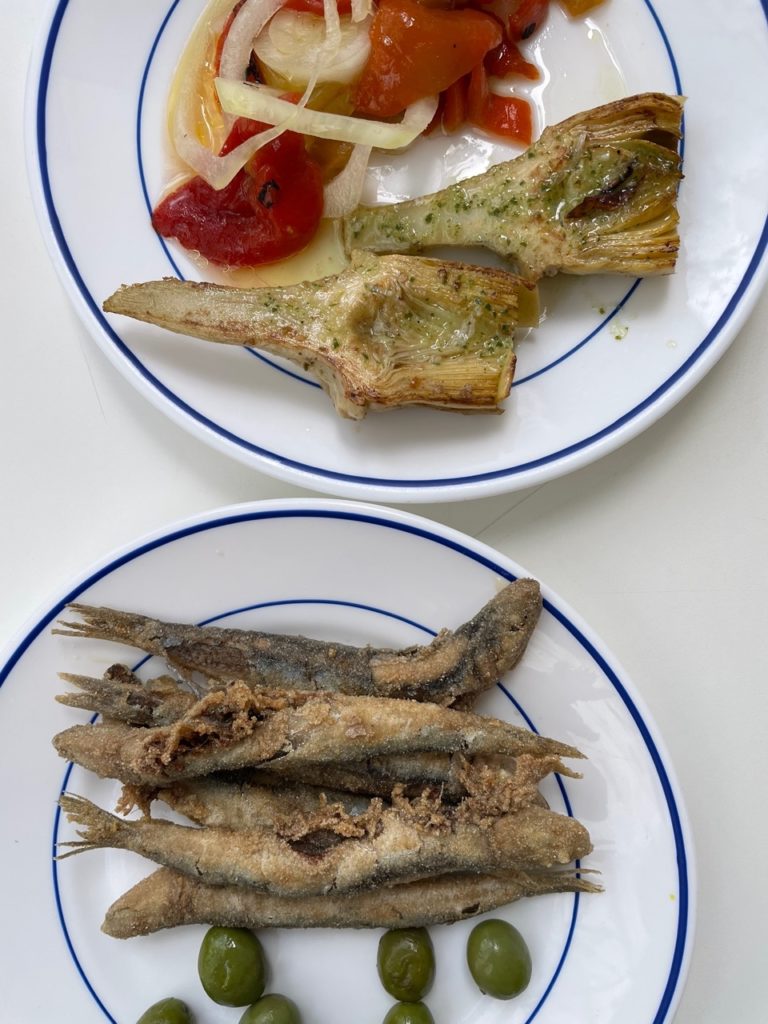
One of the old city’s most striking landmarks is its Parque Genovés, which is located across the street from the building in which I took my intensive language classes. I mention this to embarrass myself as I’d never taken the time to explore the gardens before this most recent visit. Emma and I went at sunset one day where we found several fountains as well as the park’s waterfall and elevated bridge, which to me felt a bit like Disneyland’s Splash Mountain due to its design and, well, water features.
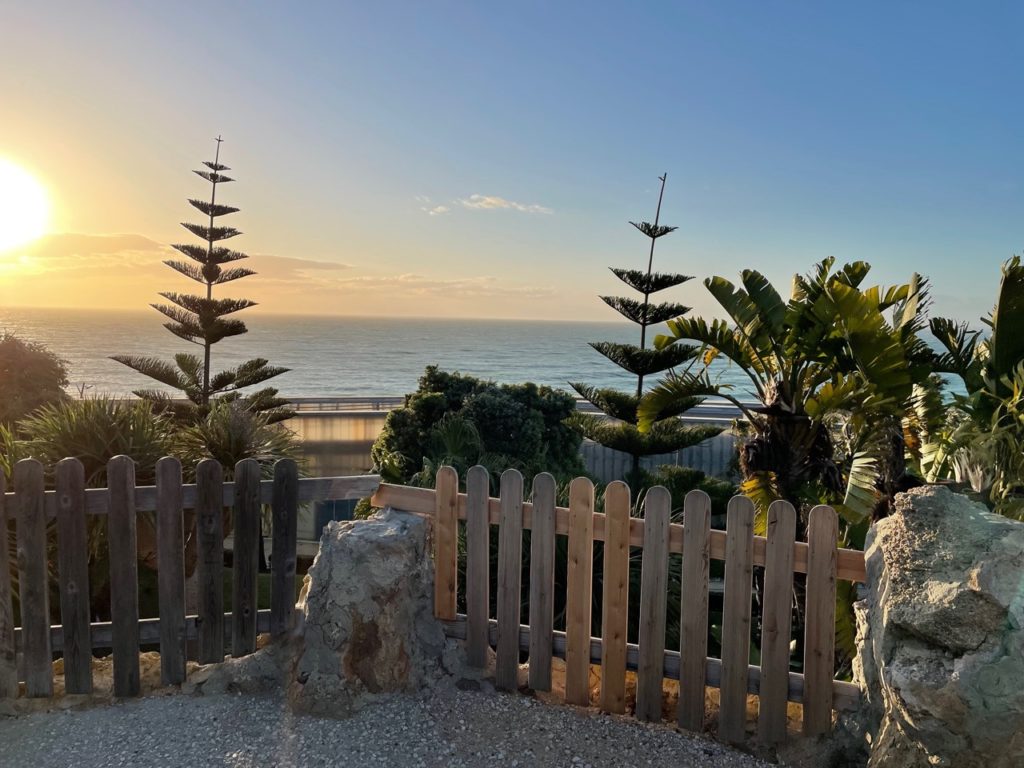
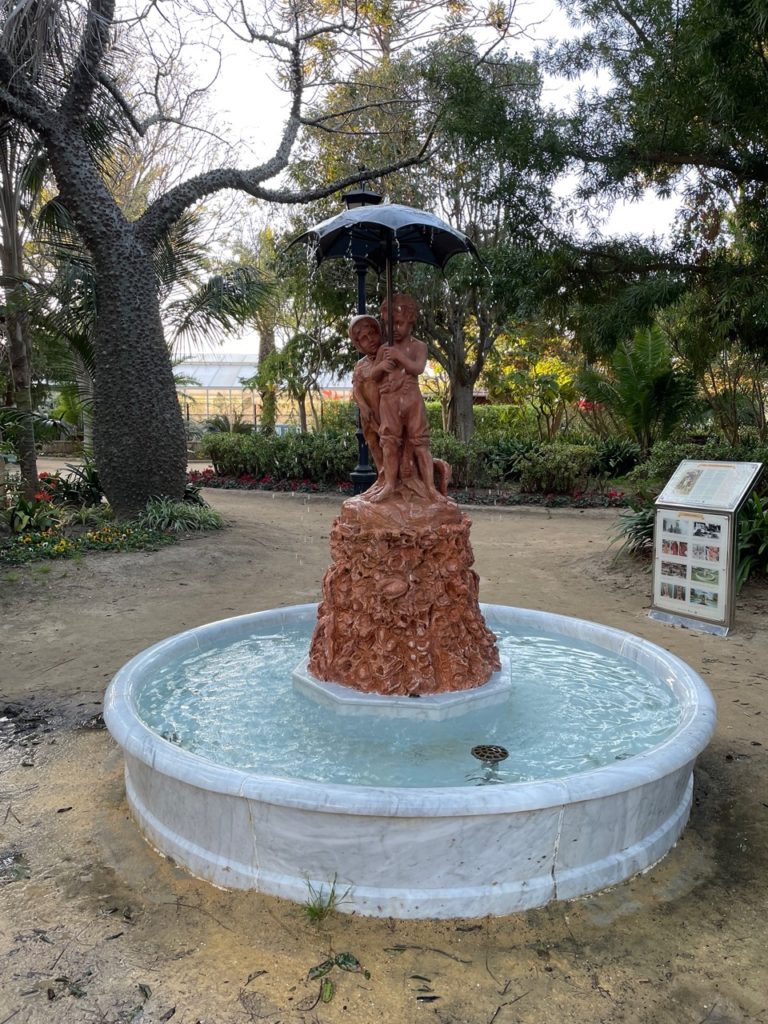
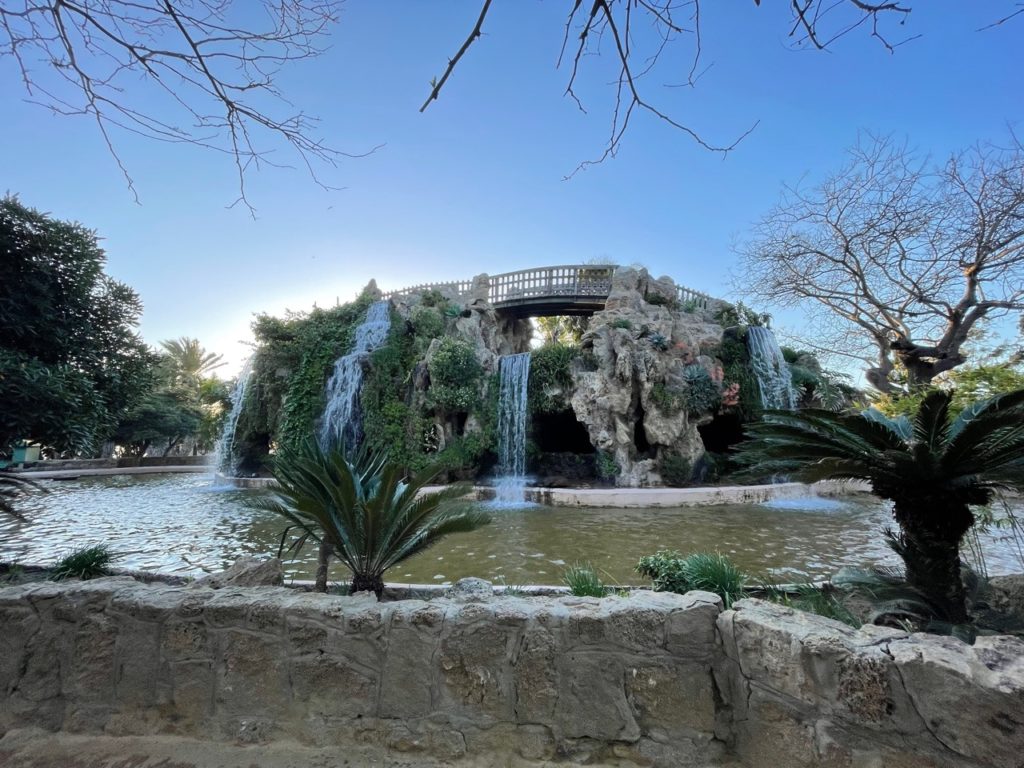
A garden is only impressive as long as one spends time in it, which is a lie that I just created to segue into another place of interest: Torre Tavira. Originally built to be a watchtower in the 18th century, this building offers panoramic views of Cádiz as it is the city’s tallest building and also operates the oldest camera obscura in Spain. The Tower’s website shares information about how the visual phenomenon works and lists some other such cameras on the Iberian peninsula. But all hope is not lost! For those of you in California, New York, and North Carolina, here’s a list of where you may find your own camera obscura much closer to your doorstep!
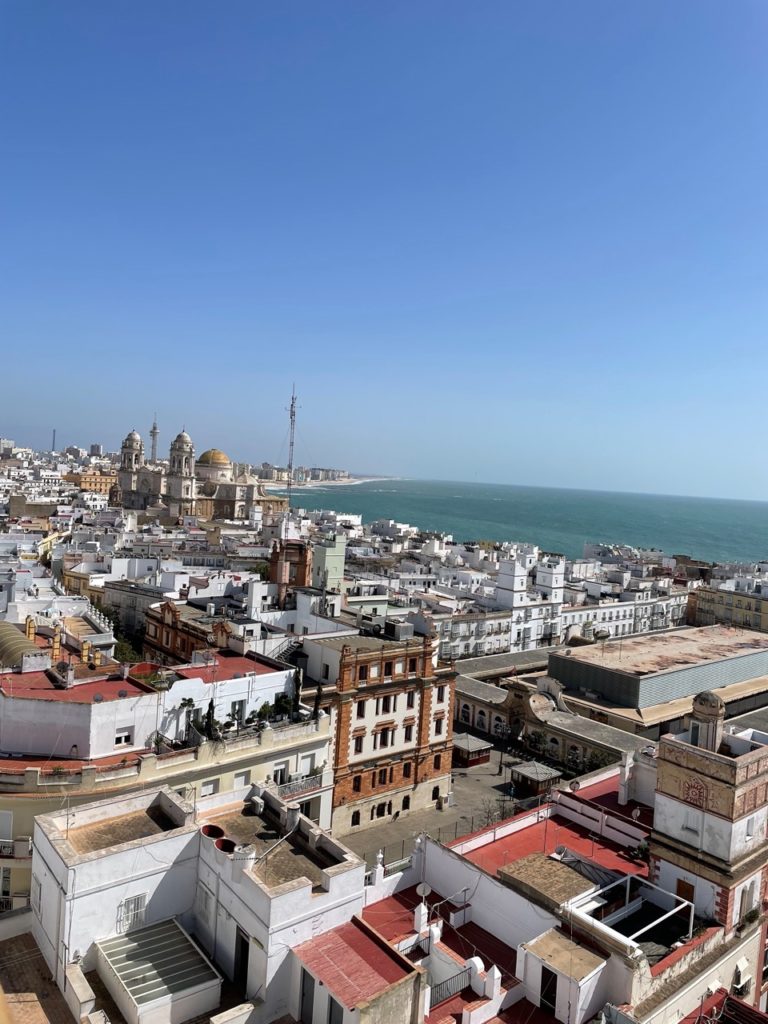
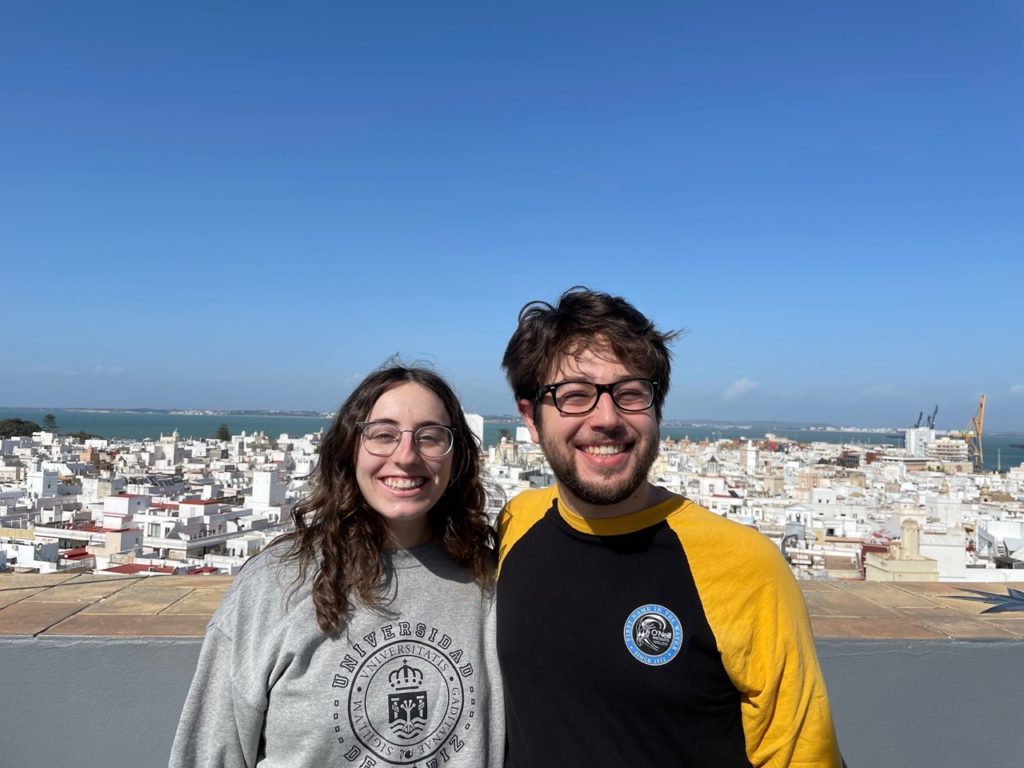
Emma and I had been talking about going out for a fancy night on the town and when we got to Cádiz, I fondly recalled a restaurant that I’d already had the good fortune to visit called La Curiosidad de Mauro Barreiro. After calling to make a reservation for our last night in Cádiz, we arrived to find myriad intriguing menu options, such as the following:
- Saam de croquetas de pollo como si fuera una ensalada cesar (Saam of chicken croquettes as if it were a Caesar salad) (Appetizer)
- Sardina ahumada, cogollo aliñado y queso azul el Bucarito (Smoked sardine, marinated lettuce heart and El Bucarito blue cheese) (Appetizer)
- Cabracho frito con su kit para hacerte tus tacos… Viva México Picha!!! (Fried scorpionfish with its kit to make your tacos… Viva Mexico Picha!!!) (Entrée, on left)
- Pluma ibérica glaseada en chiles dulces, patatas y mojo canario coreano (Iberian pork loin glazed in sweet chilies, potatoes and Korean canary mojo) (Entrée, on right)
Naturally, we ordered all of these things. Not only did we find all of these names unique, but their corresponding plates also looked like delectable pieces of art.
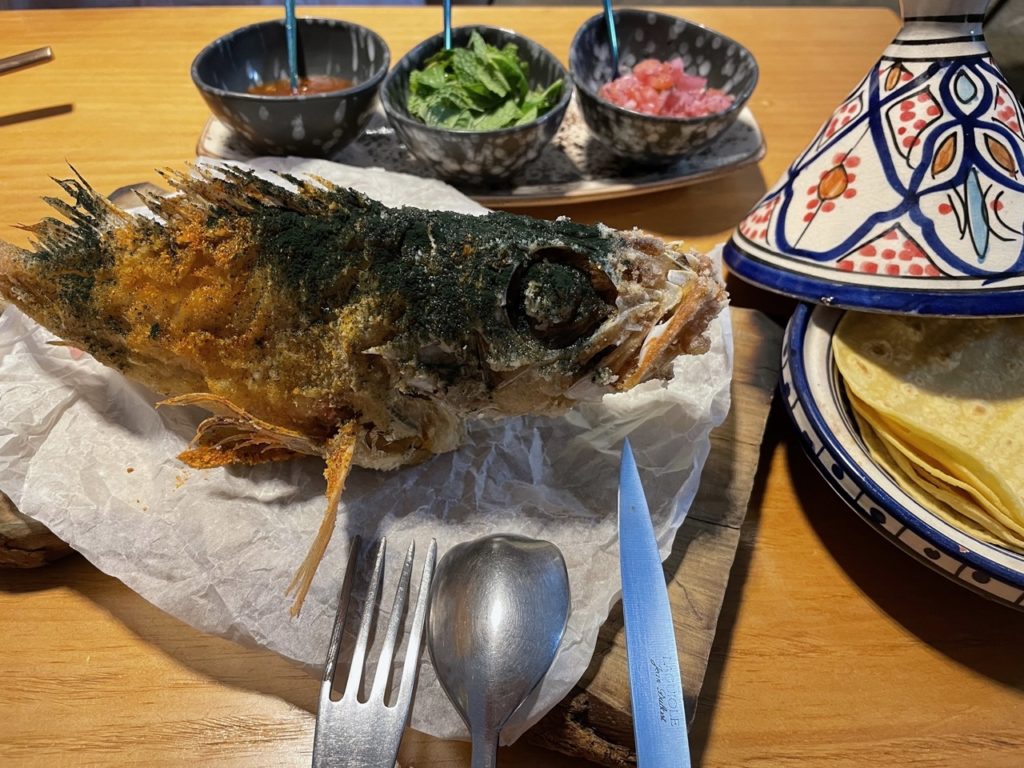

I can’t say that I expected to receive a whole fried scorpionfish covered in spirulina when I ordered that third item, but Emma took to it like a pro—leaving me only able to contemplate its head and spine when she was done removing its meat for us to eat—and looked beautiful while doing it, might I add. Oh, and how could I have forgotten our dessert, La tarta de queso que quiso ser mandarina (The cheesecake that wanted to be a mandarin orange)!
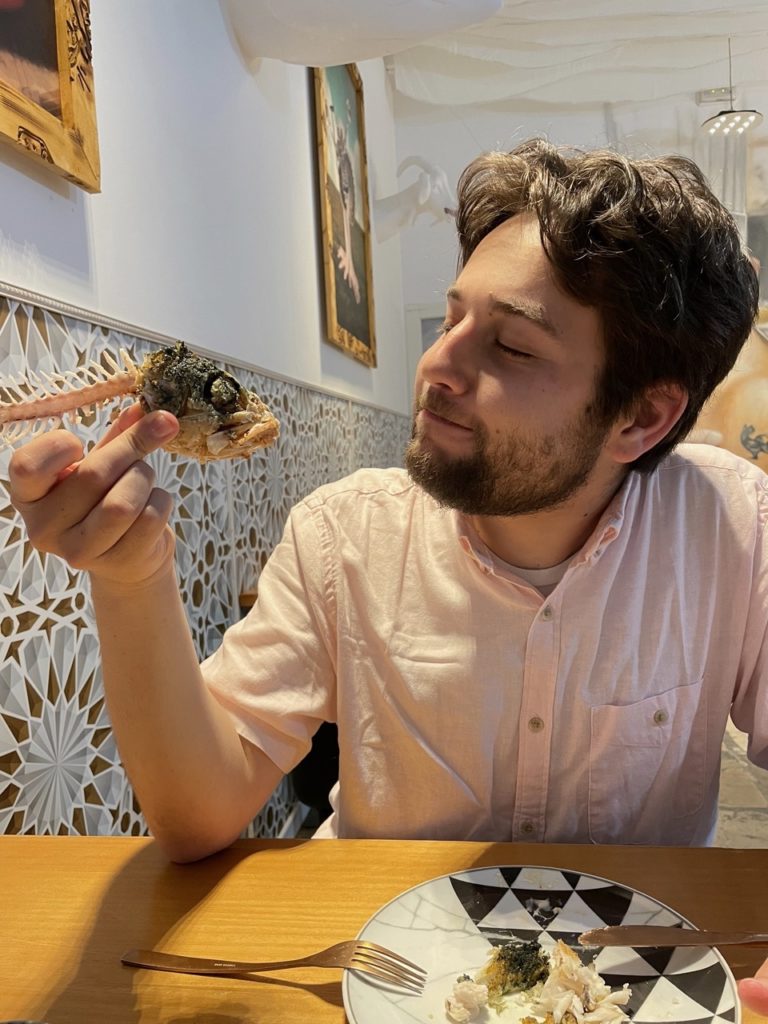


Before the meal that day, Emma and I had left the old city to get precautionary COVID tests to comply with regulations for upcoming travels. In addition to receiving negative results (YES!), we walked back to the old city along the water and took some beautiful shots of the beach and Atlantic coast.
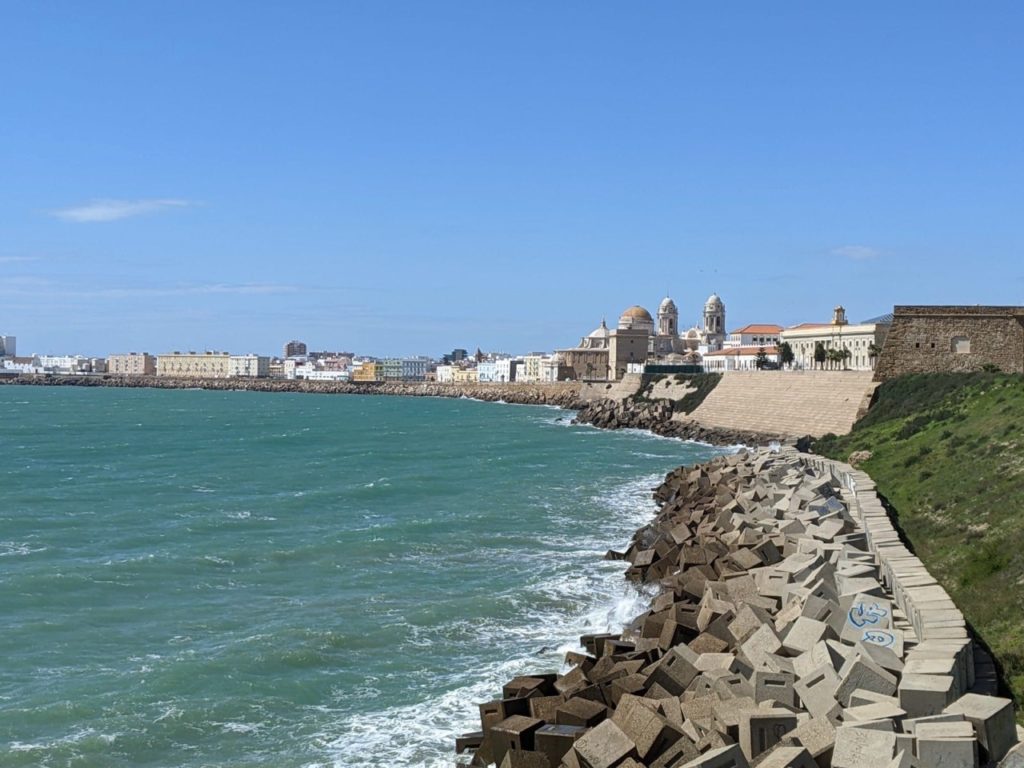
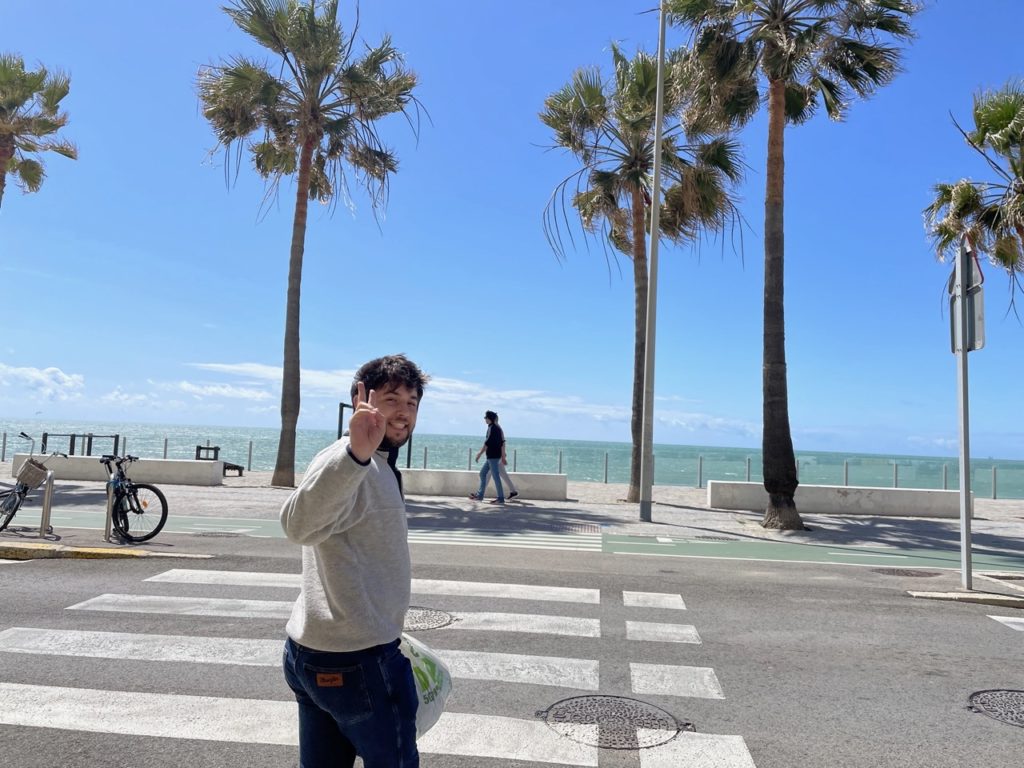

Finally, the time had come for us to leave. I can’t believe that we’d only spent three days in Cádiz and yet it felt to both of us that we’d done so much! To be fair, I had scheduled our busiest day of attractions to date and we did a really good job of getting out of the house each morning. Here are two photos of the world at 6:00 AM, complete with a pitch-black sky and two smiling, exhausted faces as we made our way back to the train station to continue our adventures.

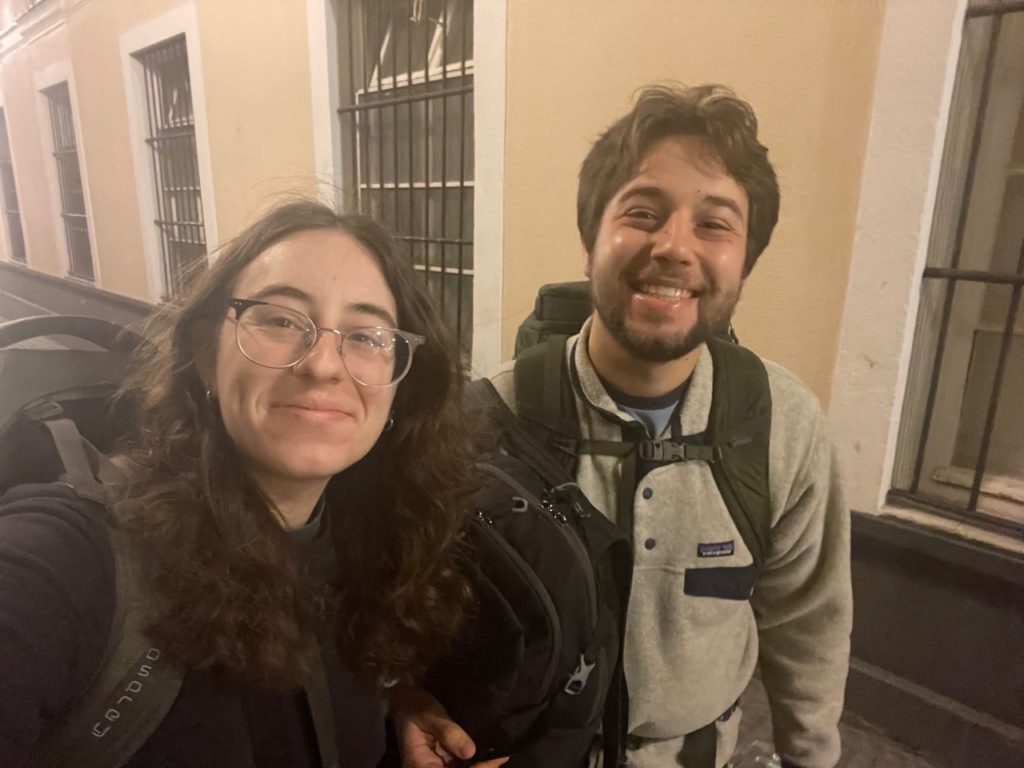
During our time in Cádiz, I kept returning to the same, curious thought: I’m so lucky to have chosen to study there for a little while. When I first heard about the city, I knew nothing about it, just like Emma when she first met me. After all of the stories that I’ve told her about how magical I found the place, it’s still incredible to me that we were able to experience some of its charms together. Three days is not so long to spend in a place, much like six weeks, and I’m sure that we’ll be back.
With infatuation for peregrination,
A
oh my goodness, i loved this post so much. it was fun, educational and heart warming. beautifully done andrew!
Wonderful, Andrew. We loved seeing all the beautiful and fascinating places — and you two there!
You really wrote your piece from the heart Andrew. I knew you always would have fond memories of
Cadiz 2018 but now you can add more wonderful memories as you and Emma retraced your old steps
and discovered new ones.
Safe travels…
Love Dad/Fred